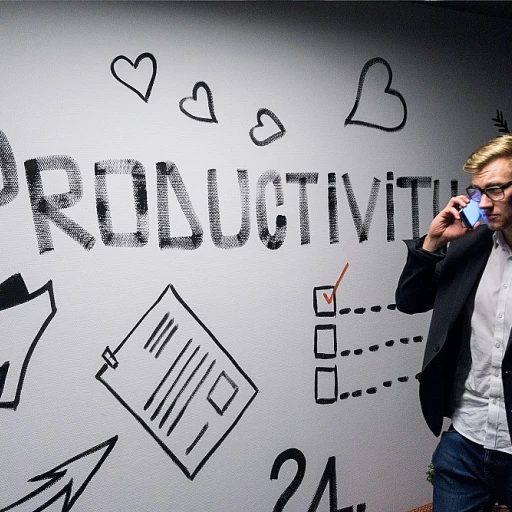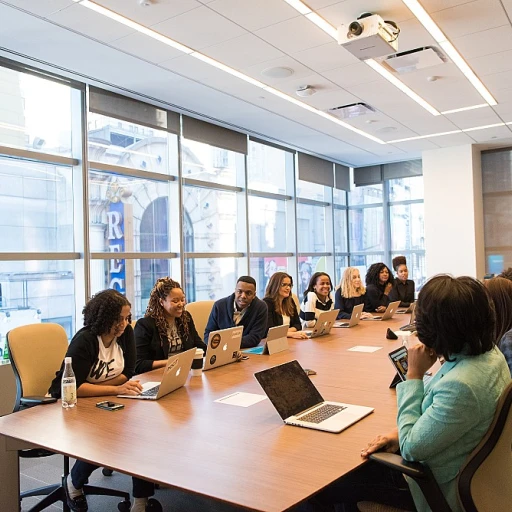
Understanding Development Goals
Clarifying the Concept of Development Goals
Development goals in the workplace serve as crucial milestones for both personal and professional growth. They are essential for enhancing an individual's skills, improving performance, and steering career advancement. Whether focusing on short-term achievements or aiming for long-term aspirations, clearly defined development goals drive continuous improvement and success. Recognizing and setting these goals is a part of professional development, encouraging employees to stretch beyond current capabilities. Identifying objectives that align with organizational needs enhances both individual and company performance. Goals should be specific, measurable, attainable, relevant, and time-bound (SMART) to effectively guide and motivate employees towards achieving targeted outcomes. Moreover, it's important these goals resonate with the employees’ personal values and career aspirations, ensuring personal investment and commitment. This alignment not only boosts motivation but also fosters a supportive environment where team members collectively push boundaries in pursuit of growth. For those interested in advancing their careers, understanding how to set these goals effectively can be greatly beneficial. If you’re curious about developing your skills further, consider exploring this guide on creating an impactful resume, which can be a significant part of your career journey.Aligning Goals with Organizational Objectives
Goal Alignment with Strategic Vision
When setting development goals, it's essential to ensure they align with the overarching strategic vision of the organization. This alignment not only contributes to achieving organizational objectives but also enhances overall employee engagement and motivation. Here’s how you can effectively align goals to fit within this framework:- Understand Organizational Objectives: Start by gaining a clear understanding of the company's mission, values, and long-term goals. This will provide a solid foundation for setting both personal and team development goals that support the strategic direction of the company.
- Integrate Goals with Business Strategy: Whether you're focusing on improving communication skills or enhancing leadership abilities, link these professional development goals with the organization's strategy. This creates a cohesive plan that benefits both the individual and the business.
- Collaborate Across Teams: Encourage team leaders to collaborate when setting performance goals. By working together, teams can ensure that their objectives complement each other, contributing to wider business success.
- Ensure Flexibility: Aligning goals doesn't mean they are set in stone. As the business environment changes, be prepared to adapt and update objectives to remain relevant and supportive of the organization's dynamic needs.
- Set Measurable Outcomes: Clear, quantifiable milestones allow for ongoing assessment of progress and success, ensuring that both individual career goals and business objectives are met effectively.
Examples of Personal Development Goals
Illustrative Personal Development Goals for Employees
Setting personal development goals in the workplace can significantly impact both individual growth and organizational success. When employees focus on their own professional development, they not only advance in their career but also enhance their overall performance. Here are several examples of personal development goals that employees may consider:
- Enhancing Communication Skills: Effective communication is crucial in any professional setting. By setting goals to improve verbal and written communication, employees can facilitate better teamwork, reduce misunderstandings, and increase productivity.
- Improving Time Management: Efficient time management skills can lead to better work-life balance and increased efficiency. Employees might aim to organize tasks effectively to meet deadlines without compromising quality.
- Developing Leadership Abilities: Aspiring to a leadership position often requires honing skills such as decision-making, team coordination, and inspiring others. Employees can set goals to take on more responsibility or lead small projects to gain valuable leadership experience.
- Advancing Public Speaking Skills: Developing the confidence and competence to speak effectively in public or within the team can open doors to more opportunities for career advancement and professional growth.
- Increasing Problem Solving Capabilities: Setting goals to enhance problem-solving skills can be highly beneficial. It allows employees to approach challenges with more creativity and effectiveness, improving their performance and potential contributions to the organization.
By aligning these personal goals with organizational objectives, employees can ensure that their individual growth also benefits the company as a whole. This alignment fosters a supportive environment where professional development is encouraged, leading to long-term success for both employees and organizations.
Examples of Team Development Goals
Setting Goals for Teams to Drive Success
When it comes to development goals in the workplace, teams play a pivotal role in achieving organizational objectives. By setting collective aspirations, teams can enhance their performance and contribute to the overall growth of the company.
Here are some examples of team development goals that can foster a collaborative and high-performing work environment:
- Enhancing Communication Skills: Effective communication is key to ensuring that information flows seamlessly between team members. By focusing on improving communication skills, teams can reduce misunderstandings, promote transparency, and build a stronger sense of unity.
- Strengthening Problem-Solving Abilities: In a rapidly changing workplace, the ability to tackle challenges innovatively is essential. Setting goals that encourage teams to brainstorm and collaborate on finding solutions can lead to improved problem-solving capabilities.
- Boosting Time Management: Efficient time management is crucial for meeting deadlines and delivering quality work. By setting goals focused on optimizing schedules and prioritizing tasks, teams can improve productivity and outcomes.
- Fostering Leadership Development: Encouraging leadership skills within the team can empower individuals to take initiative and drive projects forward. This not only benefits the team but also contributes to personal and professional growth.
- Promoting Professional Development Opportunities: Teams can work towards creating a culture of continuous learning by setting goals to attend workshops, webinars, or training sessions. This enhances job satisfaction and opens pathways to career advancement.
Creating and achieving team development goals requires strategic goal setting and an understanding of performance management. As teams work towards these objectives, regular feedback can help track progress and identify areas for further improvement. By aligning team goals with the wider organizational vision, businesses can ensure long-term success and employee development.
Measuring Progress and Success
Tracking Progress and Celebrating Milestones
Measuring progress and success in the workplace is a crucial component of effective goal setting. It's not just about reaching the destination but recognizing the steps and milestones along the way. By regularly tracking progress, employees can gain insights into their growth and development, ensuring alignment with their professional goals and objectives. This continuous monitoring is vital for both personal and team development goals.
Utilizing Performance Metrics
Performance management systems play a pivotal role in evaluating the effectiveness of the development goals. These systems provide measurable metrics and feedback that help in assessing how well the objectives are being met. Using data-driven insights, management can tailor future goals and offer tailored support to employees, aiding in career advancement and professional growth.
Feedback and Communication
Open communication channels are key to measuring progress effectively. Regular feedback sessions enable employees and leaders to discuss achievements and areas for improvement. This practice not only enhances communication skills but also fosters a culture of feedback and adaptive growth. Constructive criticism and guidance help individuals fine-tune their approach, focusing on both short-term and long-term goals.
- Regular performance reviews help in assessing the alignment between set goals and achievements.
- Objective feedback from peers and supervisors provides clarity and direction.
- Celebrating milestones boosts morale and motivates employees for future challenges.
Adapting to New Challenges
In today's rapidly changing work environment, the ability to adapt and reassess goals is just as important as the initial goal-setting phase. Challenges may arise that require a shift in focus or a reevaluation of current objectives. By staying flexible, employees can navigate these changes, thereby enhancing their problem-solving and time management skills.
Effective leadership ensures that teams remain motivated and engaged by acknowledging both small accomplishments and larger achievements. This approach not only promotes satisfaction but also leads to sustained professional development, culminating in improved performance and career goals achievement.












